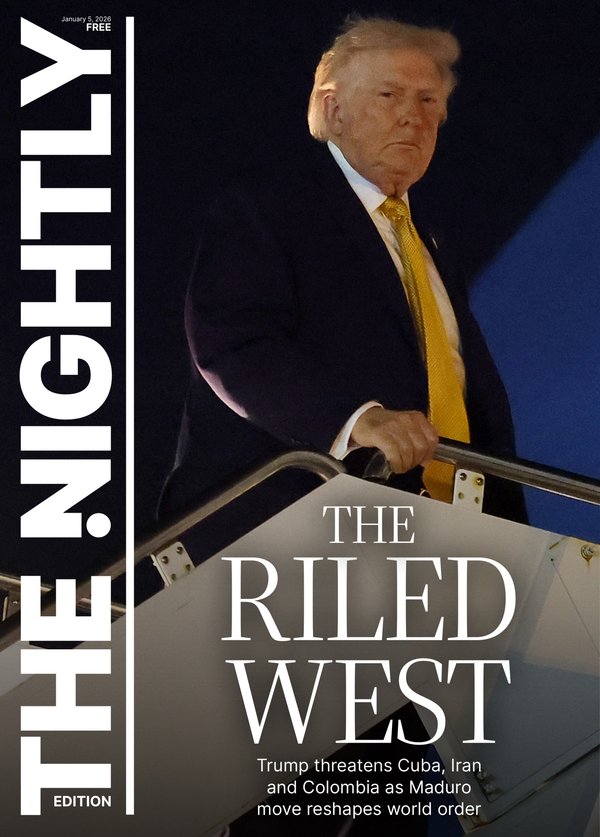Top 50 artworks to see in Australia, part four
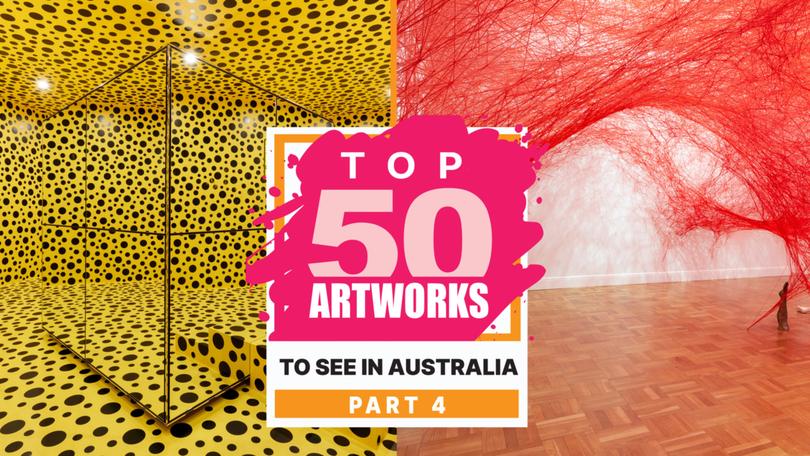
Welcome to our unfolding, unranked list of the best 50 artworks in Australian museums and galleries, taking you on a chronologically arranged tour of beauty.
You can find out more about how these works were chosen in the full introduction, but simply put: this list has a single author and therefore is highly subjective but has been put together with consideration of what each gallery or museum considers to be its most important and its most popular works.
Almost all these works are on display at the time of publication, meaning you can go and find them in the real world.
Sign up to The Nightly's newsletters.
Get the first look at the digital newspaper, curated daily stories and breaking headlines delivered to your inbox.
By continuing you agree to our Terms and Privacy Policy.If you want to find out what art is in any given gallery, the major ones all have searchable online databases. Most of them have pretty reliable filters that allow you to see what’s currently on display. All the galleries featured are free - except Hobart’s Museum of Old and New Art, which is privately owned.
Happy art-hunting!
Adut and Bigoa (2015)
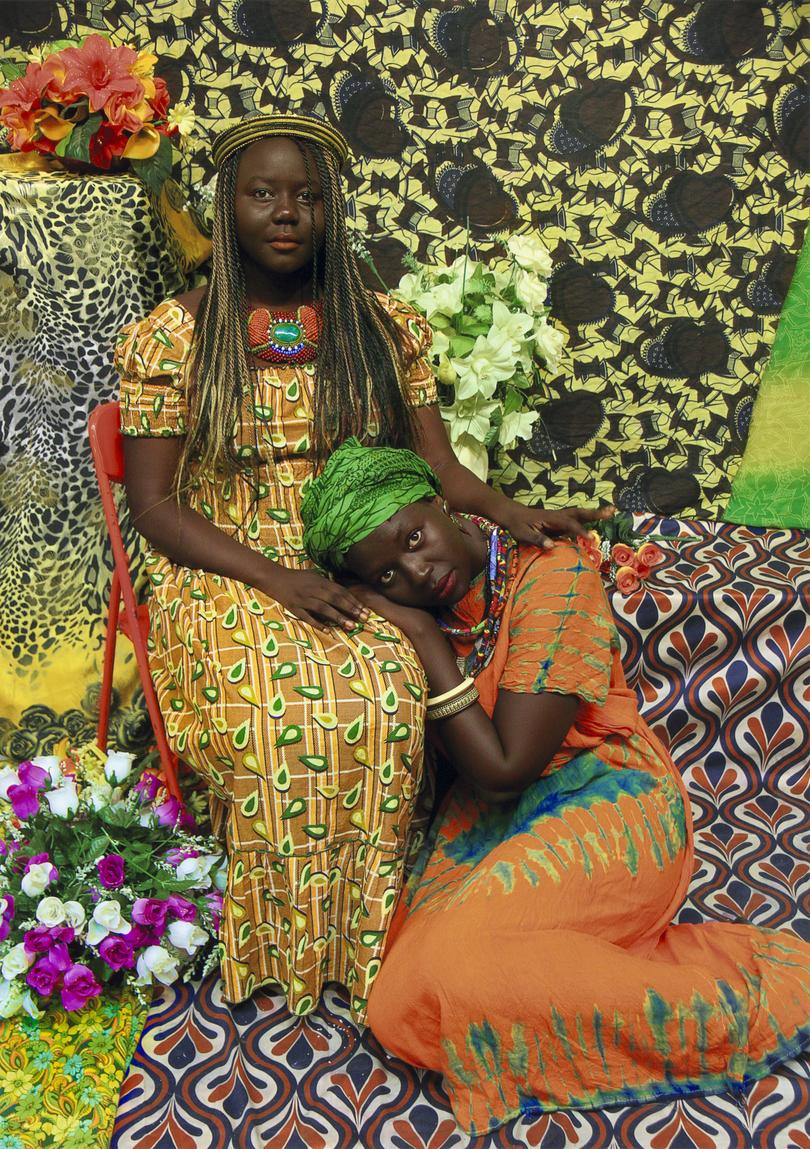
Atong Atem’s practice spans photography, video and Afrofuturist make-up (the latter of which features in her painterly self-portraits). With her early Studio Series, featuring South Sudanese friends and members of Naarm/Melbourne’s African diaspora community, she followed in the footsteps of 20th-century West African photographers such as Seydou Keïta and Malick Sidibé, who reclaimed studio portraiture from its ethnographic, colonial roots. Her series echoes the “family photos” she and many of her friends grew up with, with its careful staging and use of props, fabric backdrops and artificial flowers - but the virtuoso sense of colour and composition are all her own.
On display until October 6 as part of Africa Fashion at NGV International, Naarm/Melbourne.
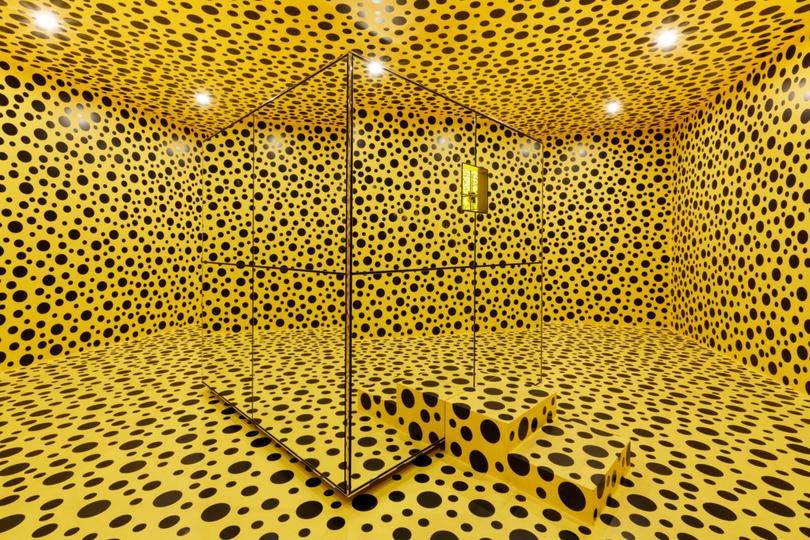
Japanese artist Yayoi Kusama gives infinity a tangible form through the repetition of dots, pumpkins and nets. In the 1960s she began making “infinity rooms”: custom-built spaces that use mirrors to create an illusion of endless space and infinite forms. This one has a mirrored cube at its centre that reflects the black-spotted yellow walls. Through a small window on one side of the cube you can view an internal mirrored space with illuminated spotted pumpkins on its floor, creating the illusion of a never-ending field stretching in all directions. Forget Insta-bait: this is an invitation to contemplate your insignificance in the vastness of the cosmos.
On display until September 22 at the Qantas Founders Museum, Longreach (QLD). On loan from the National Gallery of Australia (NGA), Kamberri/Canberra.
Beside Myself (2017)
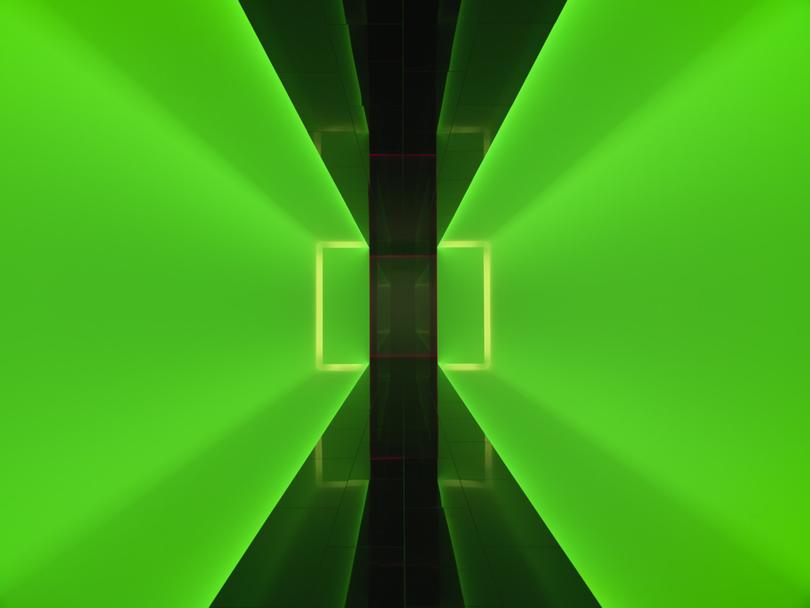
MONA has several pieces by Californian master of perceptual illusions James Turrell, whose wizardry with light, space and colour entered the pop culture pantheon via Drake’s Hotline Bling video. You can buy tickets for the perceptual cell Unseen Seen (a 15-minute experience that produces psychedelic ‘hallucinations’) or for the more mildly disorienting ganzfeld work Event Horizon. You can also head to MONA at sunrise or sunset to experience Turrell’s outdoor skyspace, Amarna. Or you can keep it simple (and free) with Beside Myself: a white-walled corridor saturated with slowly shifting projections of coloured light. Joy for your eyeballs, with a gentle perceptual twist.
On permanent display at the Museum of Old and New Art (MONA), nipuluna/Hobart.
Death Zephyr (2017)
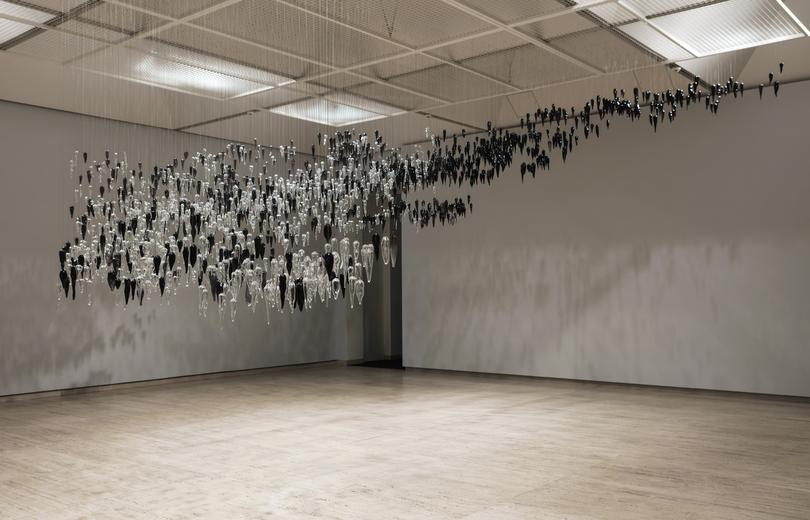
Yhonnie Scarce (Kokatha/Nukunu people) has made many works about the effects of colonisation on Aboriginal people, including the repercussions of nuclear tests in the Maralinga area of South Australia (the lands of the Kokatha people, her ancestors) in the 1950s and 60s. Glass, the product of heat on sand, is an apt medium. Death Zephyr, composed of hundreds of hand-blown forms shaped like bush yams, represents one of the poisonous, radioactive clouds that crept across Aboriginal land (it’s actually based on a photograph). Ethereally beautiful yet menacing, and evocative in the most primal way, it is a powerful memorial to lost lives and environmental destruction.
In the permanent collection of the Art Gallery of New South Wales (AGNSW), Warrane/Sydney.
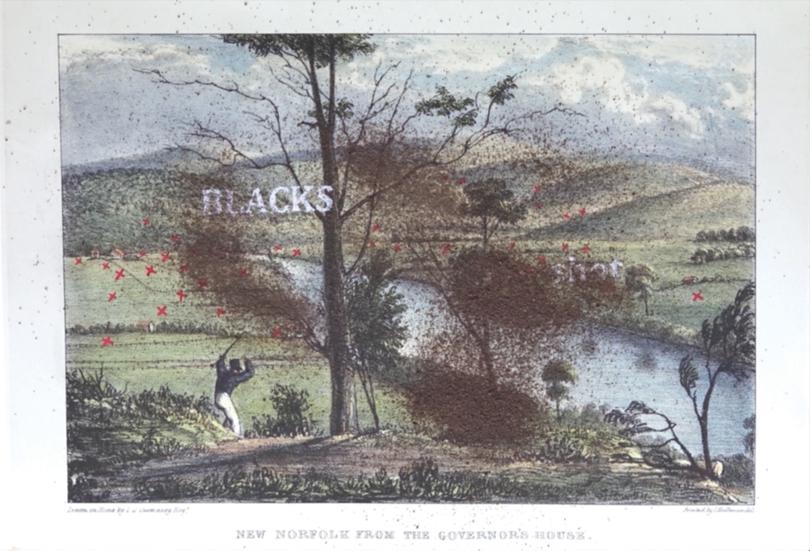
Julie Gough (Trawlwoolway people) has a way of hooking you with a familiar, reassuring aesthetic - a picturesque landscape or piece of antique furniture - and then delivering a knock-out punch of revelation that irrevocably alters your perspective. In this pair of videos, she presents 19th-century colonial landscape paintings of lutruwita/Tasmania alongside filmed footage of the same site, inscribing each view with text taken from newspaper reports during the Black War (1824-1832) detailing massacres of palawa/pakana (the island’s Aboriginal people) that occurred at the site pictured. As in so many of Gough’s forensically-researched works, the colonists are damned by their own accounts.
On display as part of Ngurra Bayala (Country speaks) at the Blue Mountains Cultural Centre, Katoomba (NSW). On loan from the National Gallery of Australia (NGA), Kamberri/Canberra.
Absence embodied (2018)
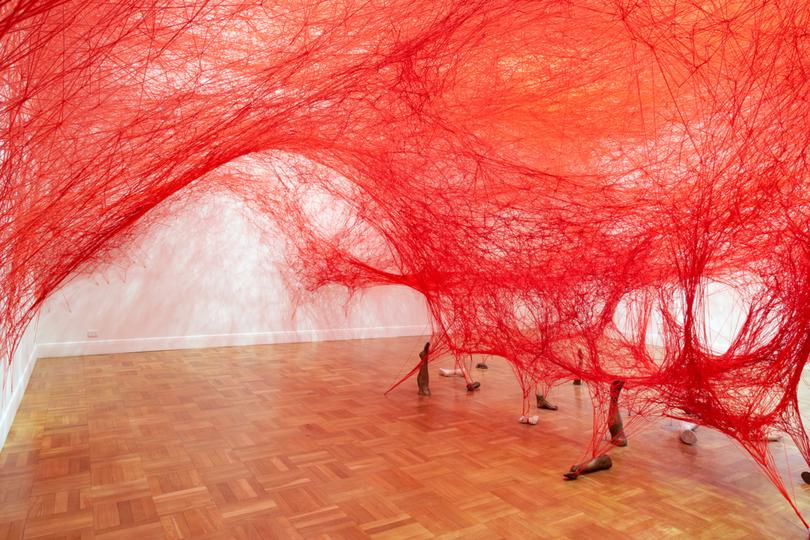
Japanese artist Chiharu Shiota’s “red room” is one of the most popular works at AGSA, thanks to its once-seen-never-forgotten intricate web of more than 180 kilometres of red yarn, painstakingly installed over three weeks. Shiota describes her string installations as “drawings in the air” that symbolise life and death and the connectedness of everything and everyone. She made this particular room in the wake of being re-diagnosed with cancer and undergoing chemotherapy, which she said disrupted the connection between her soul and body. At key points on the floor, bronze and plaster casts of lower arms, hands, legs and feet appear to anchor or hold the thread.
On permanent display at the Art Gallery of South Australia (AGSA), Tarntanya/Adelaide.
True Ch’ien (2018)
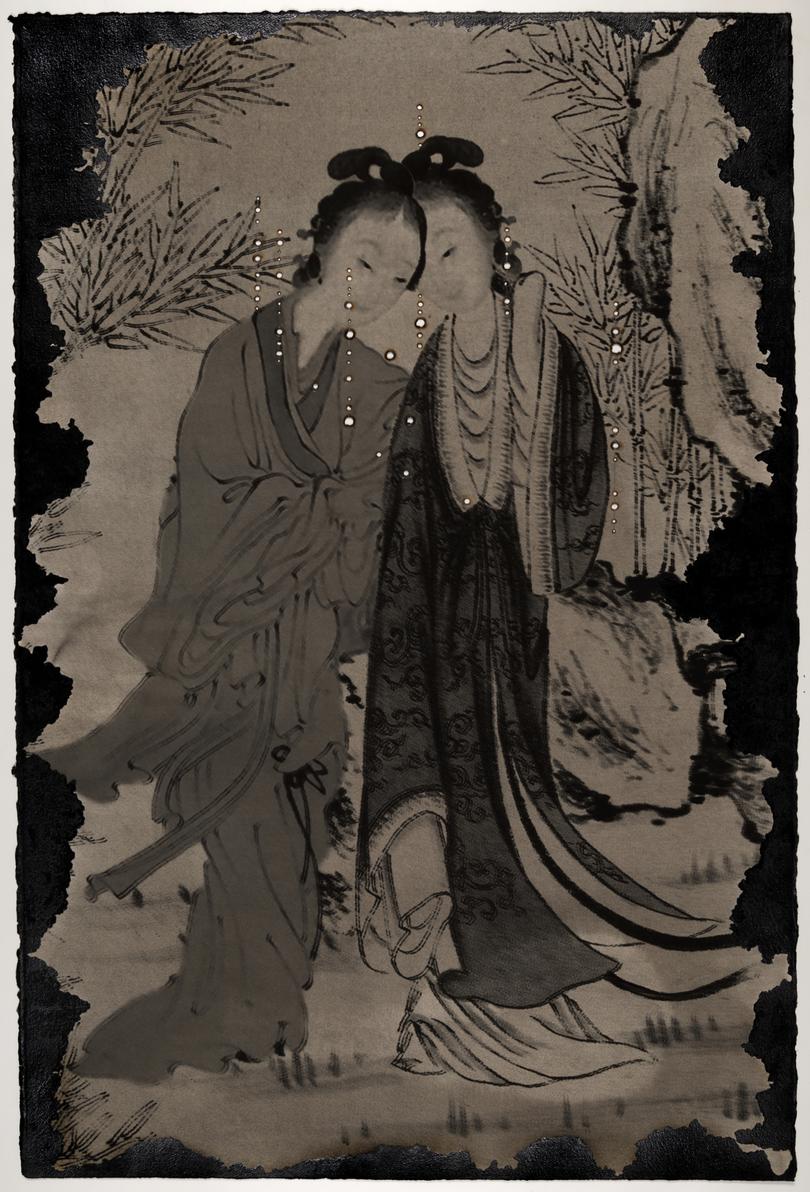
At first, the holes burned through this work by Lindy Lee suggest an intensity of feeling that is incendiary. They lend a haunting quality to its beauty. The 10 panels depict a Zen Buddhist kōan (enlightenment story) about a young woman called Ch’ien who unwittingly splits in two to pursue different pathways simultaneously (one Ch’ien follows her lover, the other stays home with her father). For Lee, a practising Zen Buddhist, the story represents her struggle with the split identity of being Chinese and Australian. The perforations suggest a collision of realities, with something new forged in the process.
On display at Naala Nura, Art Gallery of New South Wales (AGNSW), Warrane/Sydney.
Skin country (2018)
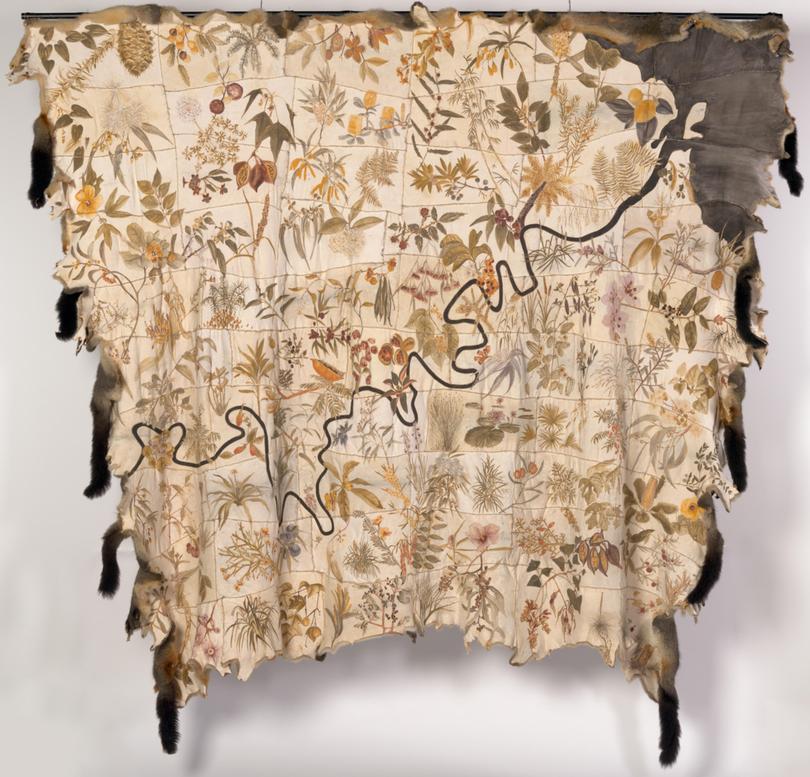
Possum-skin cloaks, an important signifier of identity for south-east Aboriginal people, have experienced a resurgence in recent years, led by senior Victorian cloak-makers (and artists) including Lee Darroch, Maree Clarke and Treahna Hamm. Queensland-based artist Carol McGregor got permission from these women to work with possum skins, and this show-stopping 60-skin work revitalises the cloak-making technologies of her Wathaurung ancestors in Victoria, using them to map the greater Meeanjin/Brisbane area (including the winding Maiwar river) by its native plants. Her beautiful botanical illustrations are painted in natural pigments and ochres from the areas depicted, and their placement reflects extensive research and community consultation.
On display until August 18 in Seeds and Sovereignty at Queensland Gallery of Modern Art, Meeanjin/Brisbane.
Ruffles on the Rajah (2018)

The convict ship Rajah sailed from England to Van Diemen’s Land (lutruwita/Tasmania) in 1841 with 180 women on board. To pass the time they made a massive quilt, using supplies given to them by the British Ladies’ Society for Promoting the Reformation of Female Prisoners. That quilt is now considered one of the most important textile works in Australia. The women are less famous - but if they had drawn a collective portrait of themselves, it might have looked something like this. Melbourne artist Bern Emmerichs included the name and biographical details for each woman, inscribing them into art history.
Ruffles on the Rajah is on display at the Tasmanian Museum and Art Gallery (TMAG), nipaluna/Hobart. The Rajah Quilt is on display until August 25 as part of A Century of Quilts at the National Gallery of Australia (NGA), Kamberri/Canberra.
Remain (2018)

With this poetic video work, Iranian Australian artist Hoda Afshar found a devastatingly effective way to convey the experiences of refugees held in indefinite detention on Manus Island, Papua New Guinea. Collaborating with several imprisoned men (including Kurdish Iranian writer Behrouz Boochani) she staged dreamlike tableaux against the almost impossibly beautiful backdrop of a neighbouring island they were allowed to visit during the day. As we watch the men traverse this tropical paradise (which one describes as a “green hell”) we hear voice overs of them singing, reciting poetry, and talking about riots, suicides and despair. Remain underscores the humanity of these men - and the inhumanity of Australia’s immigration detention system.
On view from July 16 at UQ Art Museum, Meeanjin/Brisbane, as part of the Art Gallery of New South Wales’s touring exhibition Hoda Afshar: A Curve is a Broken Line.
